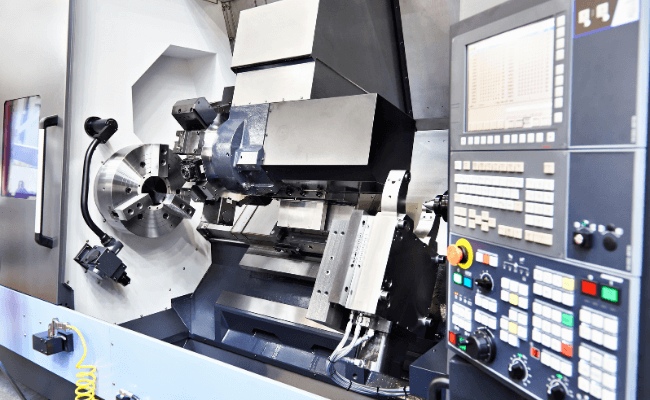
The Role of Nurse Practitioners (NPs) in Leading Change
In today’s fast-paced, tech-driven world, the healthcare landscape is evolving rapidly. Central to this transformation is the use of advanced technology to improve patient engagement and care. Nurse Practitioners (NPs) are uniquely positioned to lead this change. As healthcare providers with clinical expertise and strong patient relationships, NPs can act as both advocates and innovators when it comes to integrating technology into practice. This article will explore the role of NPs in leading change through the use of technology, emphasizing how these advancements can revolutionize patient engagement and care.
Table of Contents
The Evolution of Technology in Healthcare
Healthcare has witnessed a digital transformation in recent years. From telemedicine platforms to electronic health records (EHRs), technology is reshaping the way patients interact with healthcare providers. This shift has presented both challenges and opportunities. NPs, who often act as frontline providers, are at the center of this transformation and are tasked with adopting, understanding, and using these tools to improve patient outcomes.
The Unique Role of NPs in Patient Engagement
NPs provide holistic care, often focusing on preventative measures and education, which helps them build strong, trusting relationships with their patients. This trust positions NPs perfectly to champion the integration of new technologies that improve patient outcomes. Patients are more likely to engage with technology when their provider encourages its use, especially if the provider has a well-established relationship with them.
Building Trust Through Technology
Patients often hesitate to embrace new technology because of unfamiliarity or skepticism. NPs can ease this transition by introducing technology in a patient-centered manner. Whether it’s teaching patients how to use patient portals, explaining the benefits of wearable health devices, or encouraging the use of mobile health apps, NPs act as the bridge between tech solutions and patients.
Leveraging Telehealth for Broader Engagement
One of the most significant ways NPs are leading change is through telehealth platforms. Telemedicine has grown exponentially, especially after the COVID-19 pandemic. For many patients, it’s now the preferred mode of consultation, offering convenience, accessibility, and comfort.
NPs have embraced telehealth as an extension of their practice, allowing them to engage with patients outside of traditional settings. Telehealth tools empower NPs to connect with patients in remote areas, manage chronic conditions more efficiently, and provide timely consultations.
Expanding Access with Telemedicine
By leveraging telehealth, NPs can significantly expand access to care. Patients who may face barriers to in-person visits, such as transportation issues or distance from healthcare facilities, now have a viable alternative. Moreover, telehealth platforms enable NPs to monitor ongoing health issues and ensure continuity of care, even between visits.
Wearable Technology and Patient Monitoring
Wearable devices, such as fitness trackers, smartwatches, and remote health monitoring systems, have gained popularity in recent years. These devices collect valuable health data that can be shared with healthcare providers in real time. NPs are utilizing wearable technology to monitor vital signs, track physical activity, and manage chronic diseases like diabetes and hypertension.
Improving Chronic Disease Management
For patients with chronic conditions, continuous monitoring is crucial. Wearable devices offer a solution that allows NPs to remotely monitor patients and adjust treatments based on real-time data. By keeping an eye on key health metrics, NPs can provide proactive care, catching potential issues before they become serious complications.
Enhancing Patient Education with Digital Tools
One of the most valuable ways NPs can leverage technology is through enhanced patient education. Digital tools such as health apps, online portals, and educational platforms empower patients to take an active role in their care.
Personalized Care Plans Through Technology
NPs can use technology to create personalized care plans that patients can access at any time. For example, mobile apps can provide medication reminders, offer insights into symptom management, or send educational content tailored to the patient’s specific health conditions. When patients are better educated about their health, they are more likely to follow treatment plans, leading to improved outcomes.
Data-Driven Decision Making
Another area where NPs are leading change is through the use of data analytics. EHRs and other tech platforms collect vast amounts of data, which can be used to identify trends, improve patient outcomes, and optimize treatment plans.
Using Data to Drive Patient Engagement
NPs can analyze patient data to identify gaps in care and implement targeted interventions. For instance, by reviewing data from patient portals, NPs can pinpoint patients who have not been keeping up with appointments or medication refills. Armed with this information, NPs can reach out to these patients to re-engage them in their care journey.
Barriers to Tech Adoption in Healthcare
Despite the many advantages, there are still barriers to the widespread adoption of technology in healthcare. Some patients may be reluctant to engage with new tools due to concerns about privacy, cost, or a lack of technological literacy. Additionally, healthcare providers may face challenges related to the implementation of new systems or lack of resources.
NPs as Advocates for Tech Integration
NPs can play a crucial role in overcoming these barriers by advocating for user-friendly systems, ensuring proper training for both patients and providers, and supporting policy changes that promote the use of technology in healthcare. By staying informed about the latest advancements and understanding the needs of their patients, NPs can ensure a smoother transition to tech-enabled care.
The Future of Technology in Patient Engagement
The integration of technology in healthcare is far from over. Innovations such as artificial intelligence, virtual reality, and predictive analytics will continue to shape the future of patient engagement. NPs will remain key players in adopting these technologies and ensuring they are used to benefit patients https://techpress.us/.
A Vision for the Future
In the coming years, NPs will need to be at the forefront of adopting even more advanced technologies to enhance patient care. By staying educated on new tools, collaborating with tech developers, and advocating for patients, NPs can ensure that the future of healthcare is patient-centered, efficient, and equitable.
Conclusion
The role of Nurse Practitioners in leading change by leveraging technology cannot be overstated. NPs are uniquely positioned to champion patient engagement by embracing telehealth, wearable devices, digital education tools, and data analytics. As healthcare continues to evolve, NPs will remain pivotal in ensuring that technology is used to improve patient outcomes, enhance access to care, and empower patients to take charge of their health.

.jpeg)
